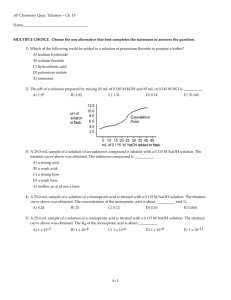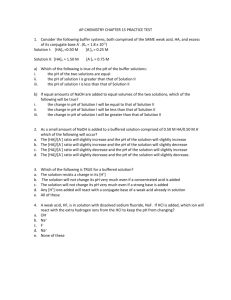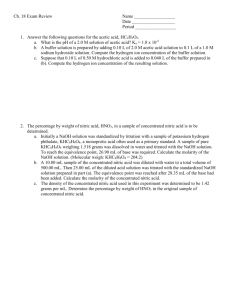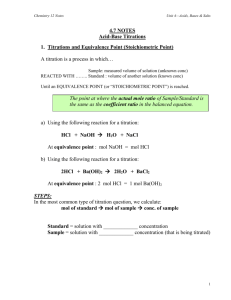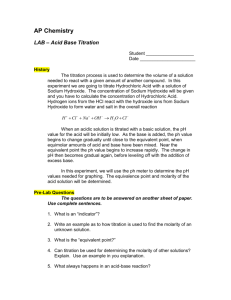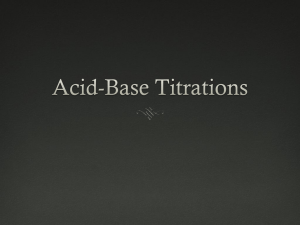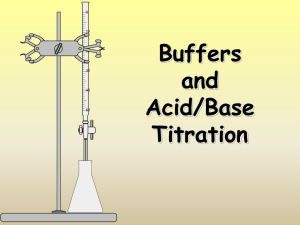AP CHEMISTRY - Tri
advertisement
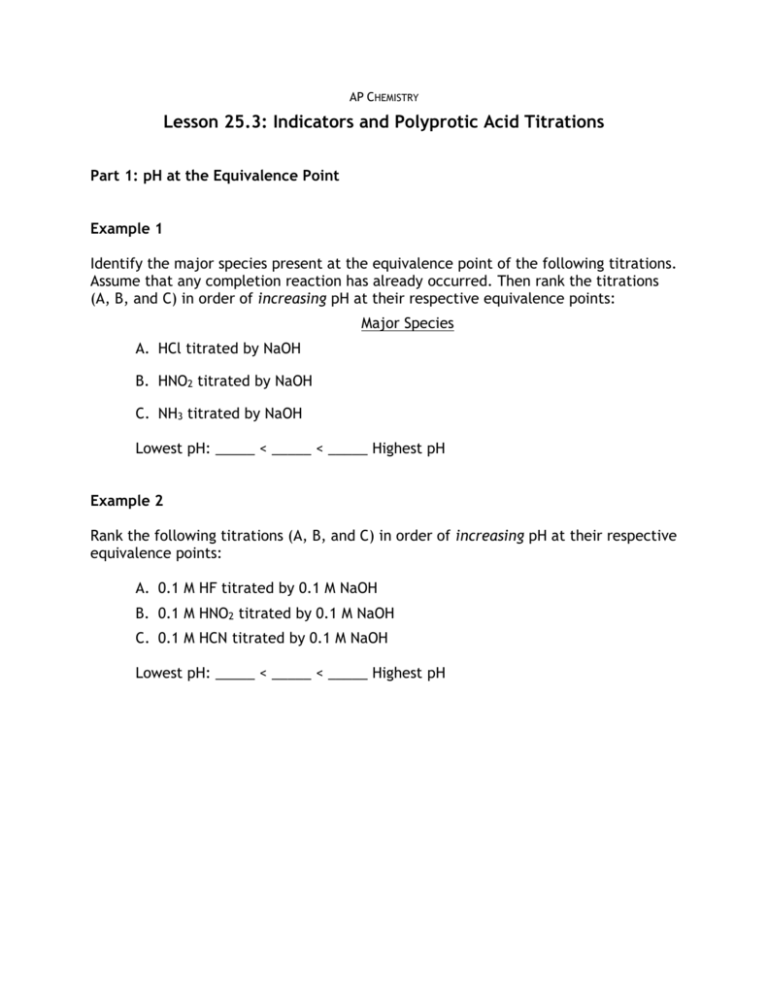
AP CHEMISTRY Lesson 25.3: Indicators and Polyprotic Acid Titrations Part 1: pH at the Equivalence Point Example 1 Identify the major species present at the equivalence point of the following titrations. Assume that any completion reaction has already occurred. Then rank the titrations (A, B, and C) in order of increasing pH at their respective equivalence points: Major Species A. HCl titrated by NaOH B. HNO2 titrated by NaOH C. NH3 titrated by NaOH Lowest pH: _____ < _____ < _____ Highest pH Example 2 Rank the following titrations (A, B, and C) in order of increasing pH at their respective equivalence points: A. 0.1 M HF titrated by 0.1 M NaOH B. 0.1 M HNO2 titrated by 0.1 M NaOH C. 0.1 M HCN titrated by 0.1 M NaOH Lowest pH: _____ < _____ < _____ Highest pH Part 2: Indicators as Weak Acids Indicators are actually weak acids and bases themselves. The acidic, protonated version is one color; the basic, deprotonated version is a different color. Phenolphthalein is shown below, where “In” represents the formula of the phenolphthalein ion: + 2 H+ H2In In2- (Colorless) (Pink) If the concentration of the protonated H2In is greater than the concentration of In2-, the solution will be colorless. If the concentration of In 2- is greater than the concentration of H2In, then the solution will be pink. Example 3 The pKa of phenolphthalein is about 9.4 (Ka = 4 × 10-10). Calculate the ratio of [In2-] / [H2In] for solutions of the following pH’s: a) pH = 2.0 b) pH = 9.4 c) pH = 11.0 Indicators in a nutshell: Choose an indicator that has a pKa near the pH of a titration’s equivalence point. Example 4 A certain titration has a pH of 4.50 at its equivalence point. Using your text, choose a viable indicator for this titration. Part 3: Polyprotic Acid Titrations F E D C B A The graph above shows the titration curve resulting from the titration of H 2A, a diprotic weak acid. At the points indicated on the graph, identify the major species present in solution after any reaction occurs. A: B: C: D: E: F:




